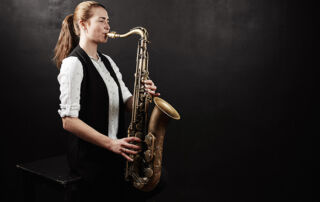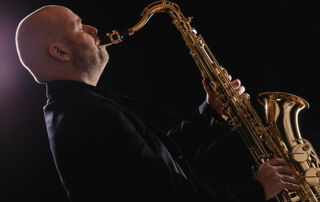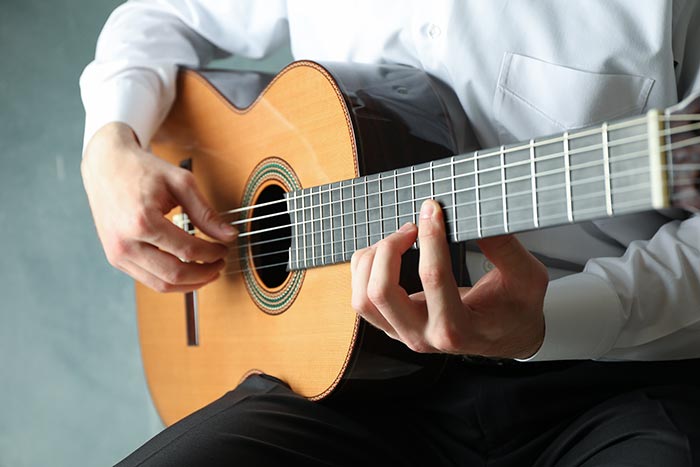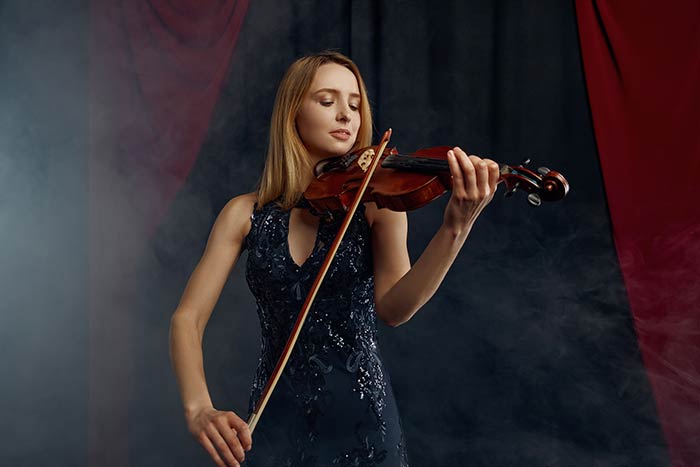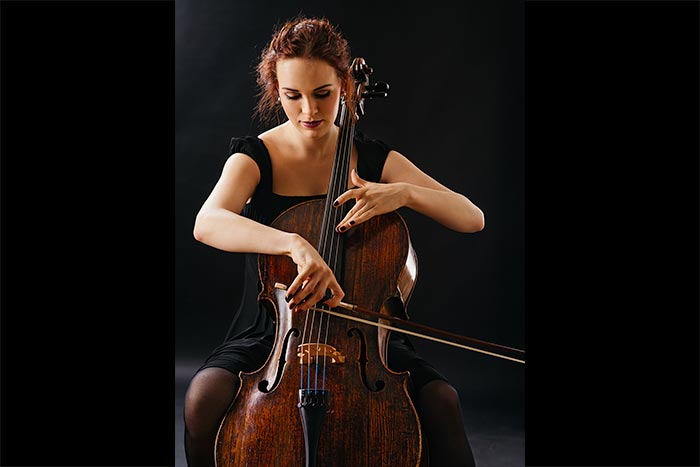Contrary to popular belief, the viola da gamba is not the ancestor of the cello but rather a cousin. The emergence of the violin family is estimated to have occurred in the 1520s in Italy. The violin was initially intended for dances, ballets, balls, and festivities. In contrast, the viol family appeared in the 15th century, also in Italy, and spread throughout Europe under the name "vihuela de arco" (bowed viol) and was considered a noble instrument.
The violin family includes various instrument sizes with different ranges: the violin, the viola, the cello, and the double bass. Similarly, the viol family comprises the treble viol, tenor viol, bass viol, and the violone (double bass viol), with the addition of a treble viol added in the 18th century.
The distinctions provided in this article pertain to the modern cello and the bass viola da gamba, which is the closest in terms of size.
- The head
The head of the viola da gamba is sculpted, often depicting a chimera's head or a figure (aristocrats liked to have their portraits carved), while the cello features a scroll.
- The number of strings
The viola da gamba has 6 to 7 strings tuned in fourths and a third. The addition of the seventh string was introduced at the initiative of Monsieur de Sainte Colombe, one of the greatest masters of the viola da gamba, in order to achieve a greater range.
The cello has 4 strings tuned in fifths.
The strings of the viola da gamba are made of beef or sheep gut, while the strings of the modern cello are made of steel.
- The neck
The neck of the viola da gamba is equipped with 7 gut frets attached with a knot, whereas that of the cello is smooth.
Each fret, as on a guitar or lute, represents a note. They are spaced in half-tones and allow the musician to easily navigate the neck, whereas the cellist must know the exact placement of each note.
- The shape
The shape of the cello, which looks so similar, is not quite the same.
The viol's shoulders are "sloping" while the cello's are "square".
The back of the cello is curved, while that of the viola da gamba is flat and "bent or folded" at the upper bout of the body.
The ribs of the viola da gamba are also wider than those of a cello.
- The soundhole
The soundholes of the viola da gamba are most often in the shape of a "C," whereas they have an "F" or "S" shape on the cello. Other less common soundhole shapes exist, such as flames or sickles.
- The bridge
The bridge of the viola da gamba is almost flat to facilitate chord playing, unlike the rounded bridge of the cello.
- Holding the instrument
One very visible difference is the way the instrument is held.
The cello is placed on the ground with the aid of a spike (either directly into the ground or on a board to protect the floor), whereas the viola da gamba is held between the legs (a technique that may appear challenging for beginners), similar to the baroque cello.
- Bow grip
The bow hold is also completely different, in the opposite direction.
The bow of the cello is held from the top, whereas that of the viola da gamba is held by the hair.
As the vihuela de arco (ancestor of the viol) was held like a guitar, it was impossible to hold the bow from the top.
The shape of a modern cello bow differs as it is concave in shape, whereas baroque bows were convex, resembling an arc.
– The vihuela de arco
In Spain, at the end of the 15th century, the vihuela de arco (a 5-string instrument) emerged, which is a cross between the vihuela de mano and the bowed fiddle.
In Italy, during the 16th century, the "Italian" position between the legs was adopted, hence the name "viola da gamba" (leg viol) and a sixth string was added.
– The vihuela da mano is the most representative instrument of the Spanish Renaissance, with a shape similar to that of a guitar. Of Aragonese origin, it is a cousin of the Renaissance lute.
– The bowed fiddle is a bowed string instrument from the Middle Ages and has had various dimensions and shapes.
A brief history of the bow.
"Arco" in Italian, its primitive shape was convex.
The structure of bows has evolved significantly over the centuries.
The first bows date back to the Byzantine Empire in the middle of the 5th century.
Horsehair was attached directly to the stick without concern for its tension, which was managed by the musician's thumb.
In the Baroque period, the construction of the bow was modified to make it longer.
The convex curve gradually diminished, evolving into a bow that was slightly straight to concave.
To manage the tension of the hair, a detachable frog was created until the discovery of the button mechanism.
At the end of the 18th century, due to the need for greater power in the compositions of the time, a new transformation emerged. Between 1785 and 1790, François Tourte (a bow maker) modified the design of the bow to calculate the best proportions.
With the exception of the use of composite materials, the bow has changed little since Monsieur Tourte first perfected it.
A brief history of the cello.
The ancestor of the cello is the rebec, a small instrument from the Middle Ages with 3 bowed strings (which accompanied troubadours during their travels). Then, in the 16th century, the basso di viola da gamba appeared, a bowed string instrument slightly larger than the cello.
The final size of the cello was established with Andrea Amati (a luthier in Cremona).
The cello had no endpin until the 19th century (it was introduced in 1830).
The increasingly complex and technically demanding compositions became challenging to perform when the musician had to hold the instrument between their legs.
This addition allowed for a more horizontal position of the instrument, which increased the technical possibilities with the left hand.
As concert halls grew larger, musicians eventually abandoned the viola da gamba, which offers a much more intimate sound, in favor of the cello, a much more powerful instrument.
Furthermore, during and after the French Revolution, viols were considered too aristocratic and were transformed into cellos, violas, and other instruments.


